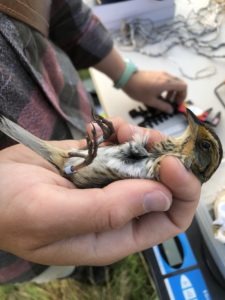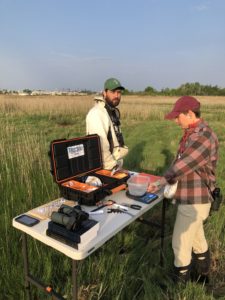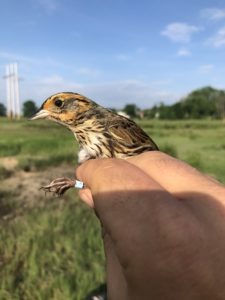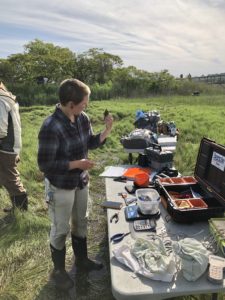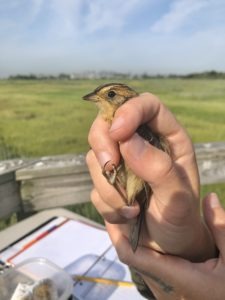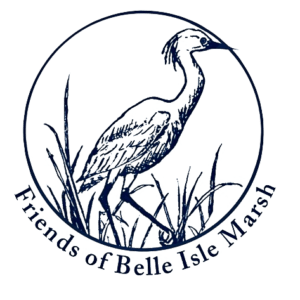2021 represents the 4th year of Saltmarsh Sparrow (SALS) work at Belle Isle marsh. In previous years we conducted passive surveys of the breeding populations at BIM. We typically would survey the breeding area 3 or 4 times per season, assessing annual numbers of birds and looking at basic breeding productivity, meaning if they had a successful breeding year. This year our permit was approved by USGS and Masswildlife to band Saltmarsh Sparrows so we conducted banding efforts at Belle Isle and Rumney Marsh. Our surveys have shown 3 separate SALS breeding populations within the Rumney Marshes ACEC of which Belle Isle is a part of.
For those who are not familiar The saltmarsh sparrow is the only species of bird that is endemic to the east coast of the United States. The entire global population of this species breeds in salt marsh habitat from Virginia to southern Maine and winters in similar habitat from Maryland to Florida. With a documented 9% annual decline, the saltmarsh sparrow could be the fastest declining species in the eastern United States, largely the result of rising ocean levels flooding active nests during spring tide and storm events. It is estimated that 80% of the global population has been lost over the last 15 years and now includes fewer than 30,000 individuals. As a result, the saltmarsh sparrow was listed as Special Concern under the Massachusetts Endangered Species Act (MESA) in 2020 and is currently being considered for federal listing under the United States Endangered Species Act. Some experts are predicting the species could become extinct by 2100 if salt marsh restoration efforts designed to create nesting habitat for the bird are not successful.
We banded the birds with the metal federal band and also a light blue plastic band representing Suffolk County. This will help us identify our birds from a distance in the field. Banding efforts are showing that populations are likely more robust than reflected in past passive surveys as we documented almost double the suspected number of breeding birds at Belle Isle than previously thought. With SALS often running on the ground vs flying, it seems likely that we overlooked birds in past years during surveys.
With SALS in real trouble, we hope that our banding efforts will give us important data about these birds such as; rates of return to Belle Isle, and how long adults live, and their dispersal range from the reservation. We will do a few more banding dates before the birds start moving south. This type of research is crucial for the scientific community for its understanding of the species to help try to save this beautiful little sparrow before it goes extinct.

